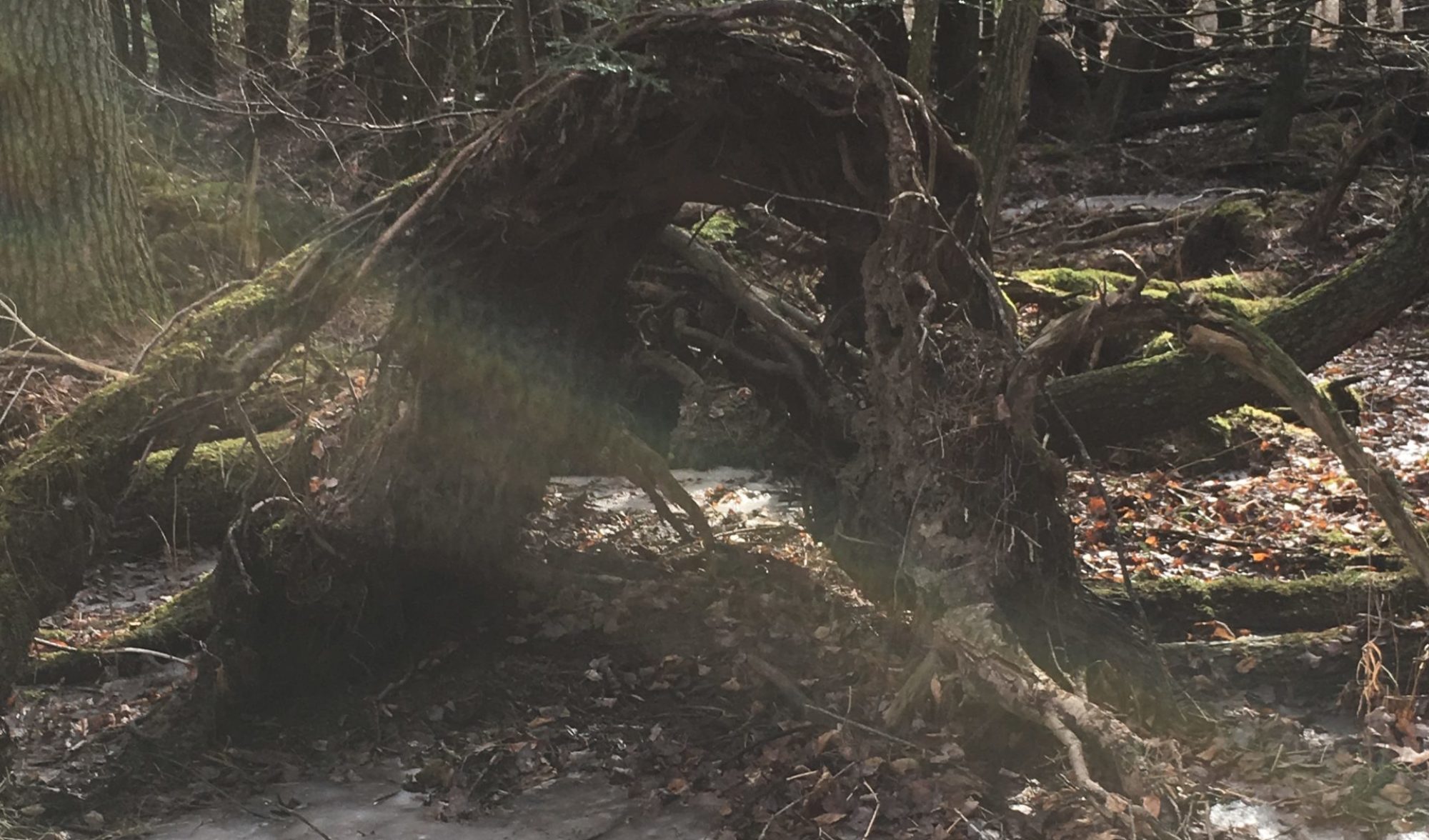In an earlier post, the founder wrote about Albatwitch (Pan chlca sp. nov.) concealment through “cloaking” for lack of a better descriptive term to describe its camouflage. The theory based on the founder’s observation of an Albatwitch on two occasions is that the Albatwitch is capable of undulatingly manipulating its fur with piloerection, i.e., the phenomenon of “raising the hackles,” not only on its back between the shoulders like many canids but all of its bodily fur. The founder observed an Albatwitch with black fur and white skin, which by undulating its fur rapidly while moving through a riparian bog and down a tall tree created a form of “motion dazzle” that to the human eyes appeared as alternating, black and white contrast. In effect, a shadowy, asynchronous, zig-zag that obscures the Albatwitch’s silhouette but does not obliterate observation of its bodily protuberances or lack thereof. The Albatwitch’s “cloaking” camouflage creates a shadowy but ethereal image that captivates and engages the human brain into visual staring that only ends when the image disappears into the forest, leaving the observer in a state of befuddled bewilderment as to the nature of the observation. Other commentators have described the movement of Albatwitch in the forest as “gliding,” or “walking on air” which the founder attributes to the human brain’s attempt to classify the motion of an Albatwitch into a mode-of-movement categorically familiar to the human brain. The Albatwitch ambulates on the ground like other animals but its “cloaking” camouflage can create the visual illusion of ghostly “gliding” or “walking on air.”
Addendum September 7, 2020, after field survey to the known habitat of an Albatwitch, September 6, 2020:
To the unfamiliar human eye, Albatwitch “cloaking” camouflage could appear merely as ambient sunlight dappling through the tree canopy with its mixture of light and shadow projected on the surface of the ground and trees but unlike sunlight, Albatwitch “cloaking” is not actually projected on the surrounding ground and trees; any semblance of projection is illusory. To the unfamiliar human eye the difference between sunlight dappling and Albatwitch “cloaking” is subtle. However, when the wind blows, Albatwitch “cloaking” is distinguishable from sunlight dappling because it is asynchronous with the intermittent elongation and shortening of shadows projected on the ground and trees by the ambient sunlight dappling that surrounds an Albatwitch.
We humans (Homo sapiens) have inhabited the earth for approximately 200,000 years, and we may have coexisted with these creatures for most of those years. When your eyes see a “cloaking” Albatwitch moving along a tree trunk or on the ground, your subconscious “instinct” may alert you that there is an animal moving in your field of vision but your likely conscious assumption will be that it is merely sunlight dappling. At this point, you should follow your subconscious “instinct” not your conscious assumption and concentrate your brain on the patterns in your field of vision. You may be surprised by a “Eureka moment” when your brain distinguishes between the conflicting subtleties in the patterns of light and shadow striking your retina, and you consciously realize that you are observing an Albatwitch moving with its “cloaking” camouflage activated.
Postscript, September 9, 2020: Although there are sighting reports of the ape-like, Albatwitch while the animal is either “cloaked” or “uncloaked,” the founder’s two sightings were of a “cloaked” Albatwitch in a remote riparian bog after the founder emerged into an adjacent clearing from the forest while armed with a 12 gauge shotgun. It is unknown whether undulating piloerection of its fur that is the theoretical mechanism of Albatwitch “cloaking” camouflage is activated autonomically (involuntarily) or somatically (voluntarily) in response to perceived danger.
